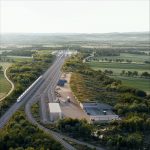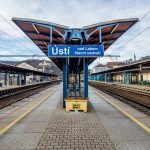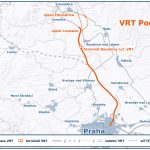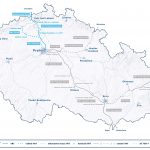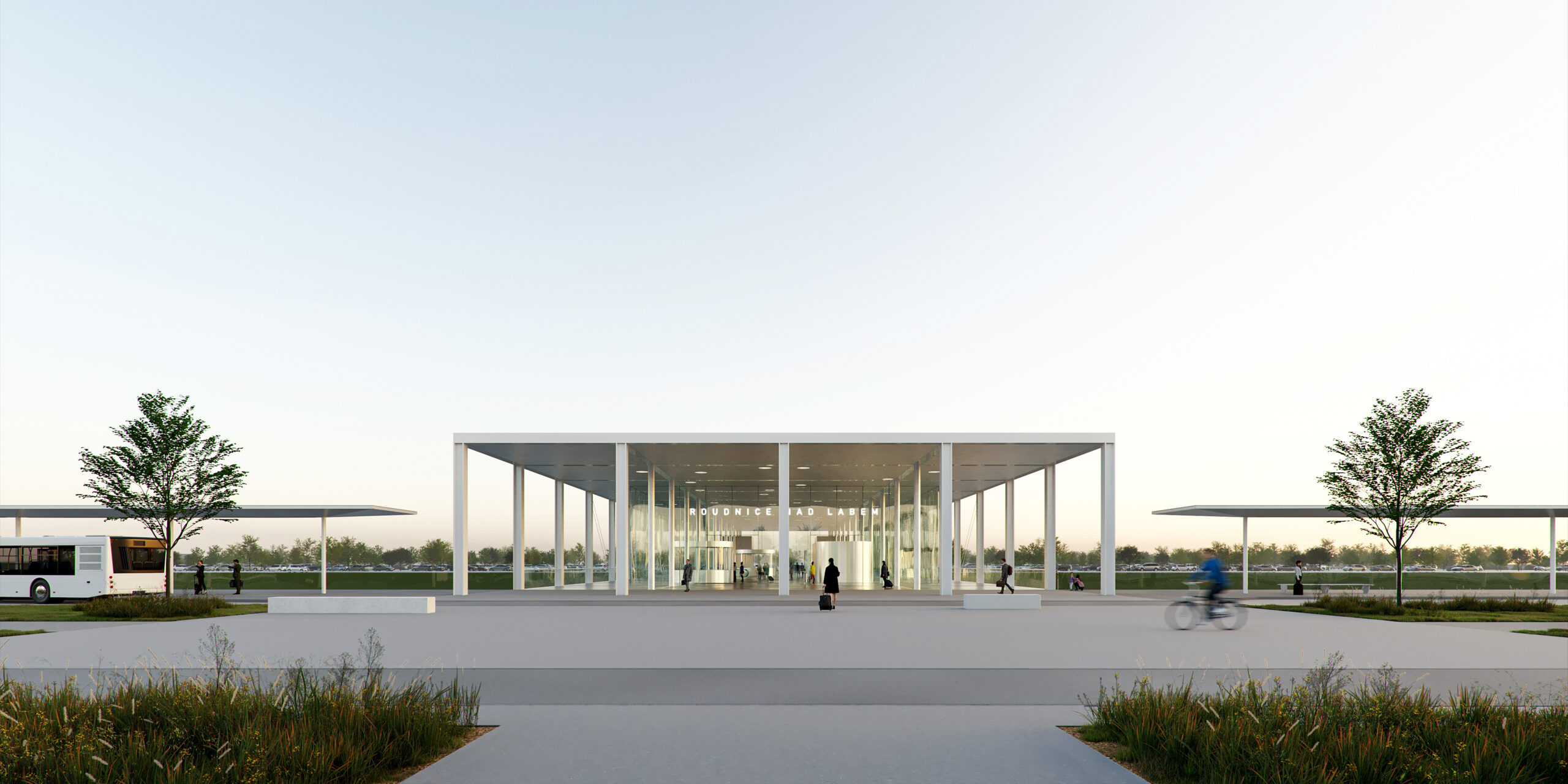 The Czech rail infrastructure manager SZ and Rusina Frei architekti signed the contract for the design of Roudnice nad Labem high-speed terminal. The proposal of the office Rusina Frei architekti was selected from a total of ten proposals and became the winner of the architectural-urban planning competition for the design and solution of the high-speed railway terminal.
The Czech rail infrastructure manager SZ and Rusina Frei architekti signed the contract for the design of Roudnice nad Labem high-speed terminal. The proposal of the office Rusina Frei architekti was selected from a total of ten proposals and became the winner of the architectural-urban planning competition for the design and solution of the high-speed railway terminal.
Following contract signing, the company will finalise it and prepare the technical solution of the terminal in the documentation for the zoning decision (DÚR).
SZ chosen the proposal due to its high quality respecting the dominant feature of the landscape, near the Říp Mountain, a 461 metres high solitary hill located 20 km south-east of Litoměřice.
The transparent high-speed terminal building will preserve the character of the landscape of Roudnicka and Podřipsko in its original form. The so-called maintenance base which will serve as a maintenance centre of the railway infrastructure, is also handled in a sensitive manner. Its roof will be greened so that it blends in with the surrounding landscape when viewed from the mountain. Behind the green belts and trees, the architects also hid the parking lot and other elements of the transport hub, the main purpose of which is to increase the availability of fast transport for the residents of the region. The station will be also connected to the D8 highway, to the existing bus services and also to the regional line from Roudnice n/L to Straškov.
The interchange hub at the Roudnice airport will be built on the Podřipsko high-speed rail (VRT) section between Prague and Lovosice. SZ is currently looking for a supplier of documentation for land use planning (DÚR) for this approximately 60 km section. According to the director of the high-speed track preparation department, Martin Švehlík, work on the section and the terminal will be coordinated. “The documentation for the terminal will then be incorporated into the track design. This will allow us to prepare the section as one functional unit,” Švehlík said.
The construction works for the 60 km Podřipsko high-speed section is expected to start in 2027 and to be completed in 2030 allowing trains to run at a speed of 320 km/h.
For passengers, the journey between Roudnice nad Labem high-speed terminal and Prague Central Station will be shortened to just 19 minutes. The terminal will be used by the inhabitants of the south-eastern part of the Ústí nad Labem Region and the adjacent territory of the Central Bohemian Region. Passengers will be able to reach the centre of Prague in 19 minutes, while the travel time to Ústí nad Labem will be reduced to 24 minutes after the entire HSR branch Praha – Dresden is completed.
The transport hub will also offer faster connections to other cities throughout the Czech Republic and abroad.
VRT Podřipsko is part of the important international link between Prague, via Ústí nad Labem towards Dresden which will speed up the journey to Germany and will improve transport accessibility to northern Bohemia. Faster connections to other parts of the region will be provided by the branch to Loun and Most, which is being prepared in the next phase of the construction of the VRT network. the new high-speed line will reduce the journey time to less than an hour.
The construction works for Prague-Dresden new connection is expected to start in 2027.
In 2021, the Czech Ministry of Transport approved the feasibility study for the Prague – Dresden high-speed rail line crossing the narrow Labe (Elbe) Valley and following this announcement, the rail infrastructure managers SZ and DB Netz started the preparation of geological survey for the cross-border rail section.
The line will also include the Středohorské tunnel (17.4 – 18.6 km) which will allow trains to run at 250 km/h and the Krušnohorský tunnel (Ore Mountains Tunnel) designed for a maximum speed of 230 km/h. This cross-border tunnel will be 26 km long, of which 11.7 km is located on the Czech territory.
On the Prague – Dresden high-speed rail line two important transport hubs will be constructed, playing an important transfer role between long-distance and regional trains as well as between other means of public and individual transport.
The Roudnice nad Labem high-speed terminal will be built in the south of the Ústí Region, which will significantly increase the availability of fast transport for residents of the surrounding towns and villages.
Ústí nad Labem is the second terminal on the high-speed rail towards Germany planned to be constructed on the existing Ústí nad Labem West station which will be adapted to high-speed standards.
SZ is also preparing the Prague East (Praha východ) terminal, to be located at Prague border. The company selected the architectural design proposed by MP + ov Nehvizdy 2020. The high-speed station which will include parking spaces for 3,000 cars and regional bus connections will serve the inhabitants of the north-eastern part of the Central Bohemian Region and the neighbouring areas of the capital. The purpose of building this peripheral station is primarily to enable residents living in the area to take advantage of high-speed rail transport without the need to drive to the centre of the city.
Under the first call of the CEF 2021-2027, SZ will receive a European co-financing of EUR 401.8 million for 8 rail projects which include EUR 19.1 funding for the studies related to the high-speed line between Czechia and Germany, covering preparatory studies for the construction of a 72.8 km section located on the pre-identified section Dresden – Praha/Kolín defined as a cross border link. The concern connection covers the Prague Balabenka – Lovosice – Ústí nad Labem, where the cross-border tunnel along the state border with Germany will be constructed. Part of the project is the design preparation of the high-speed terminals in Roudnice nad Labem and Ústí nad Labem. The cross-border tunnel is being prepared in cooperation with Deutsche Bahn. CZK 948 million (EUR 38.6 million) is the value of the studies to be elaborated between 2021 and 2024.
Share on:








